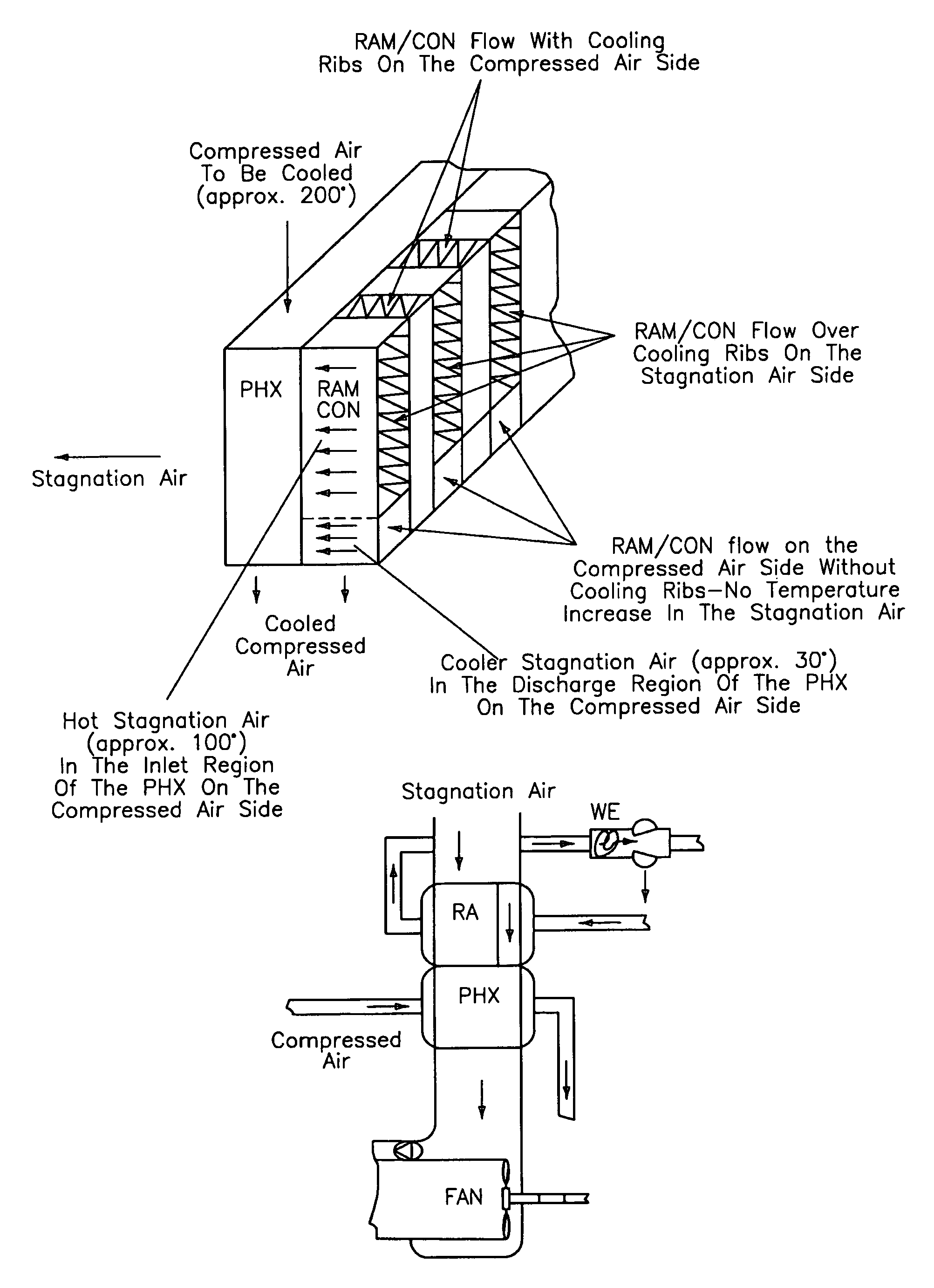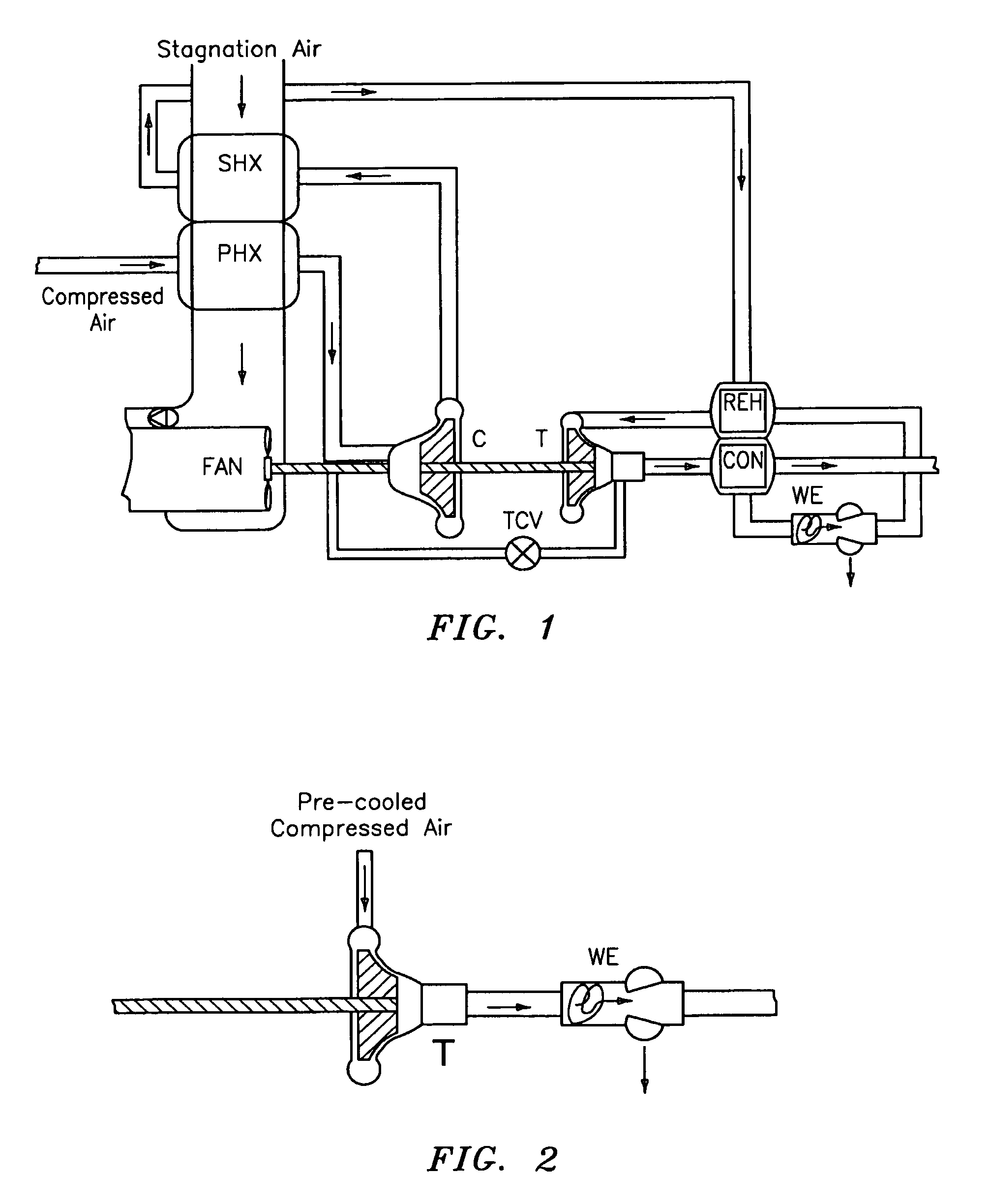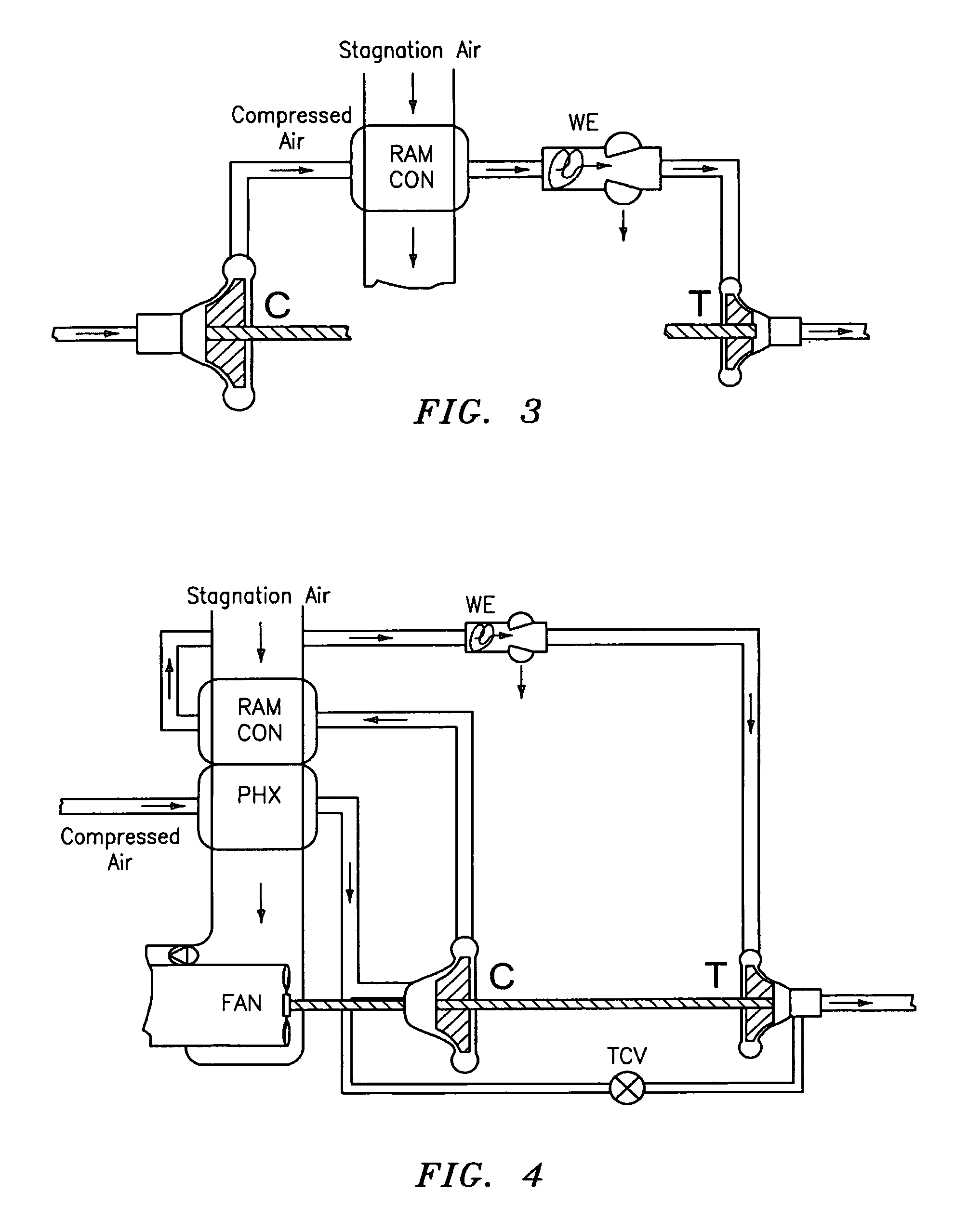System for dehumidification in air conditioners
a technology for air conditioners and systems, applied in applications, lighting and heating apparatus, heating types, etc., can solve the problems of reduced thermodynamic system processor efficiency, increased pressure loss, limited flexibility, etc., and achieve the effect of avoiding icing problems
- Summary
- Abstract
- Description
- Claims
- Application Information
AI Technical Summary
Benefits of technology
Problems solved by technology
Method used
Image
Examples
Embodiment Construction
[0052]FIG. 3 shows in a section-wise representation the dehumidification of air by means of a dehumidification system in accordance with the invention comprising a compressor C, a turbine T as well as a RAM heat exchanger or condenser RAM CON (RAM heat exchanger) interposed therebetween and a water separator WE. The compressed air which is as a rule removed from the engines or auxiliary power units of an aeroplane is supplied to the compressor C and further compressed therein. The air is subsequently led through the RAM heat exchanger RAM COM and cooled hereby. Stagnation air or, in ground operation of the aeroplane, ambient air serves as the cooling air. The compressed air is cooled and humidity condensed thereby in the RAM heat exchanger RAM CON. The condensate is separated up to almost 100% in the downstream water separator WE. The air is subsequently led through the turbine, expanded and cooled here and supplied to the mixing chamber disposed upstream of the cabin. The compresso...
PUM
 Login to View More
Login to View More Abstract
Description
Claims
Application Information
 Login to View More
Login to View More - R&D
- Intellectual Property
- Life Sciences
- Materials
- Tech Scout
- Unparalleled Data Quality
- Higher Quality Content
- 60% Fewer Hallucinations
Browse by: Latest US Patents, China's latest patents, Technical Efficacy Thesaurus, Application Domain, Technology Topic, Popular Technical Reports.
© 2025 PatSnap. All rights reserved.Legal|Privacy policy|Modern Slavery Act Transparency Statement|Sitemap|About US| Contact US: help@patsnap.com



